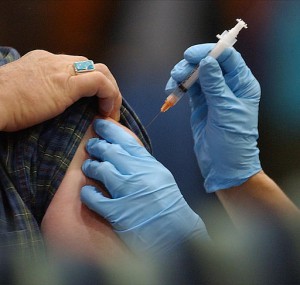Asthma and Influenza Vaccination
Results with Sildenafil Citrate Australia
After excluding participants with missing values for the study variables, 29,981 participants (2,620 with asthma) were included in the analysis in 1999, 31,635 participants (3,007 with asthma) in 2001, and 32,572 participants (3,582 with asthma) in 2001. In all 3 years, participants with asthma were younger and more likely to be women than participants without asthma (Table 1). In 2000 and 2001, participants with asthma were also more likely to be white than those without asthma. Educational attainment was similar for the two groups. 
Overall, the percentage of participants with asthma who reported having received an influenza vaccination was 35.1% (95% confidence interval [CI], 33.0 to 37.0%) in 1999, 36.7% (95% CI, 34.7 to 38.6%) in 2000, and 33.3% (95% CI, 31.6 to 35.0%) in 2001 (Table 2). These percentages were significantly higher than those among participants without asthma in all 3 years (p < 0.001 in each year). Among participants with asthma, the percentages who reported having been vaccinated were 20.9% (standard error [SE] 1.2%) among participants aged 18 to 49 years, 46.2% (SE 2.6%) among participants aged 50 to 64 years, and 72.8% (SE 2.4%) among participants aged > 65 years in 1999.
In comparison, these percentages among participants without asthma were 16.0% (SE 0.4%), 33.1% (SE 0.7%), and 65.2% (SE 0.8%), respectively. In 2000, these percentages were 22.7% (SE 1.2%), 47.8% (SE 2.3%), and 71.2% (SE 2.3%) among participants with asthma, and 16.6% (SE 0.4%), 33.3% (SE 0.8%), and 63.8% (SE 0.8%) among participants without asthma. In 2001, these percentages were 21.1% (SE 1.0%), 42.3% (SE 2.1%), and 64.8% (SE 2.4%) among participants with asthma, and 14.3% (SE 0.4%), 31.0% (SE 0.7%), and 62.8% (SE 0.7%) among participants without asthma.
In each year, the percentage of participants with asthma who reported receiving an influenza vaccination increased strongly with age (Table 2). Vaccination rates were similar for men and women in 1999 and 2001. Participants with race or ethnicity designated as “other” showed the highest rate of vaccination. The vaccination rate progressively increased with higher educational attainment.
To examine the associations between age, sex, race or ethnicity, and education and vaccination status among participants with asthma, we used multiple logistic regression analysis (Table 3). Age and education were significantly, independently, and positively associated with vaccination status in each year. In 2000, men were less likely to report having been vaccinated than women, and African-American participants were less likely to report having been vaccinated than white participants. In 2001, Hispanic participants were significantly less likely and participants with a race or ethnicity designated as other were significantly more likely to report having been vaccinated than white participants.